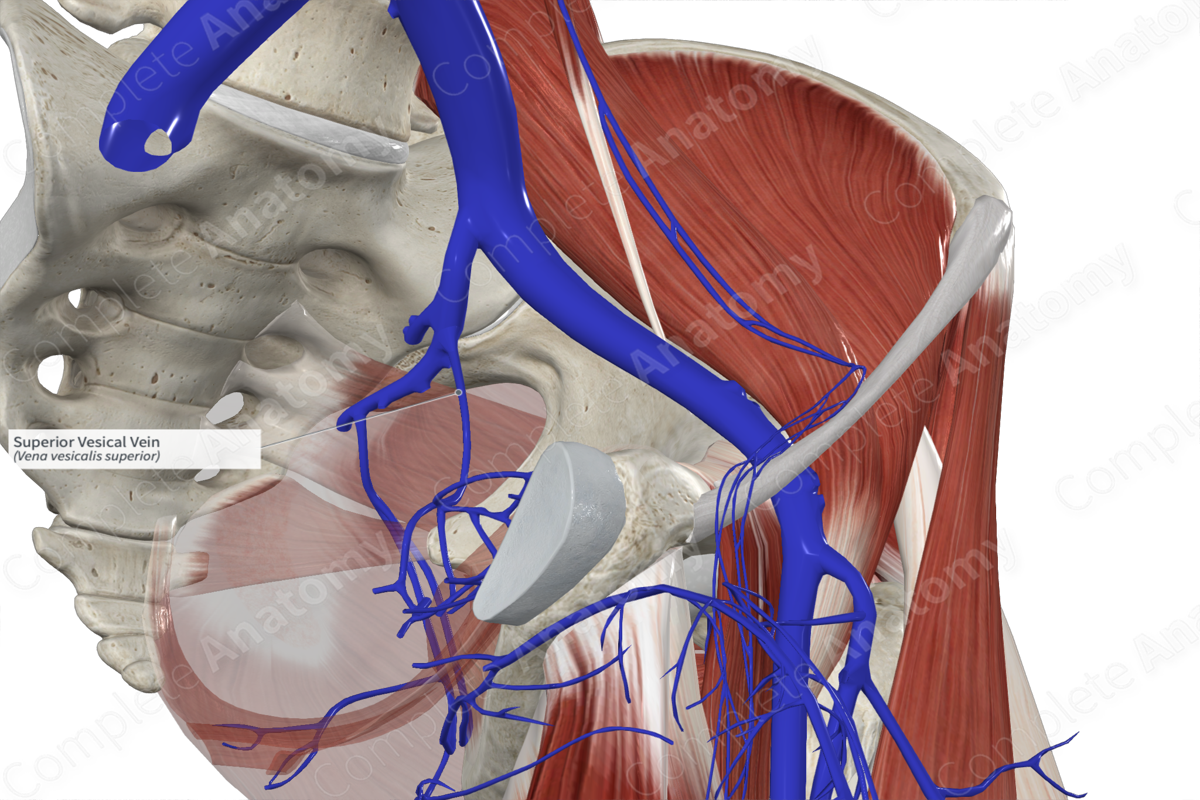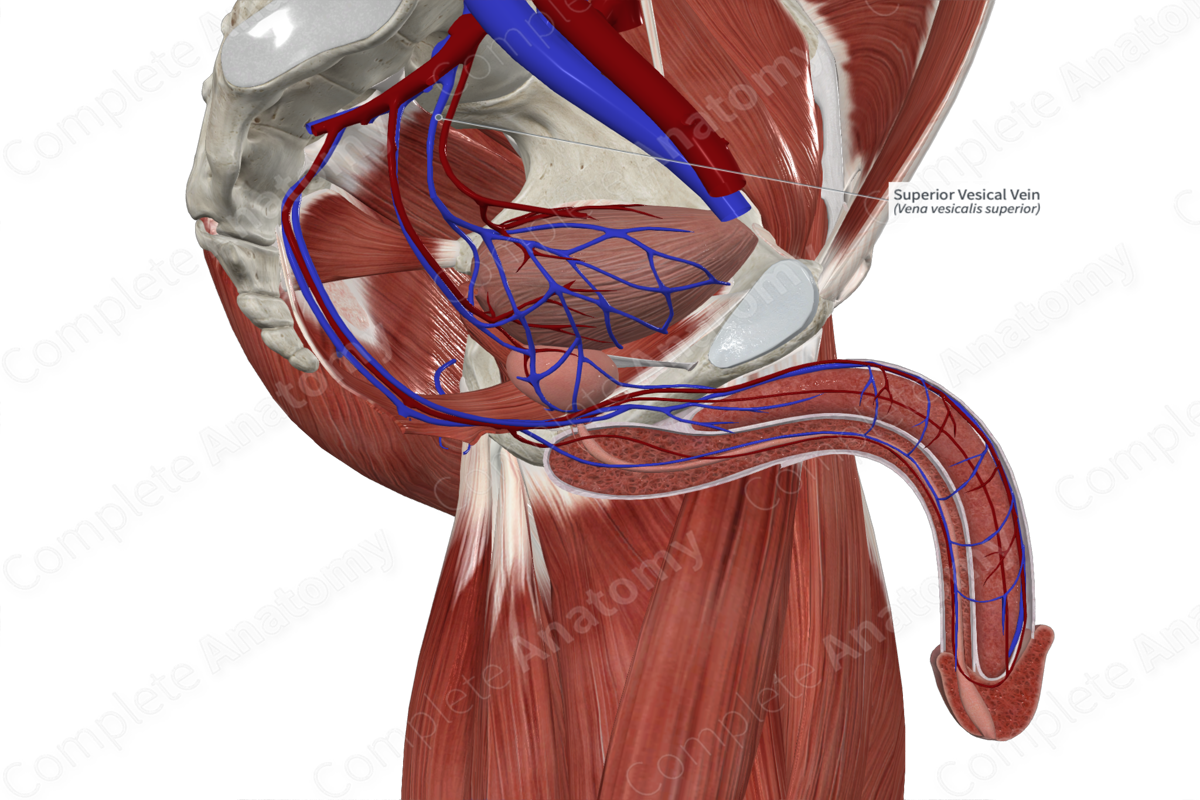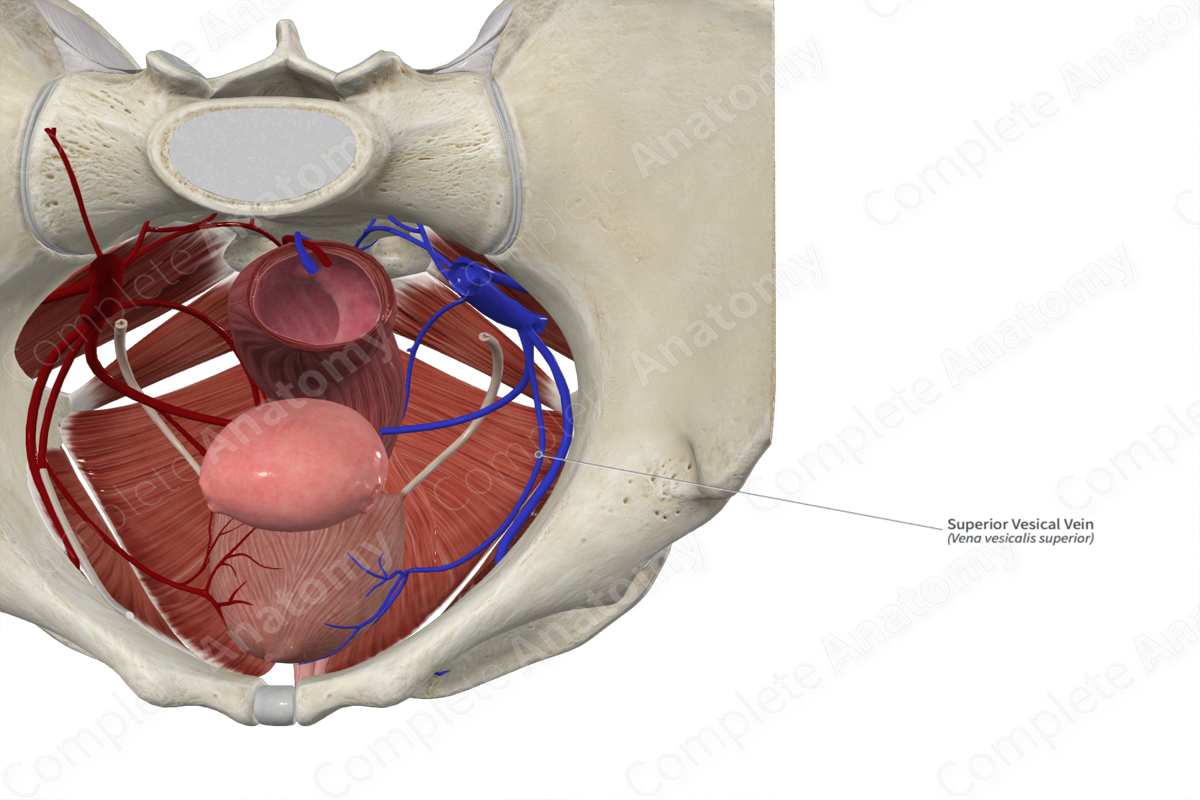
Quick Facts
Origin: Multiple branches drain the superior aspect of the bladder and unite to form the superior vesical vein.
Course: Ascends from the bladder, through the lateral ligament of the bladder, to drain to the internal iliac vein.
Tributaries: No tributaries.
Drainage: Superior portion of the bladder.
Related parts of the anatomy
Origin
Multiple branches on the superior aspect of the bladder unite to form the superior vesical vein.
Course
The superior vesical vein ascends in the pelvis, with the superior vesical artery to unite with the internal iliac vein. Along their course, both artery and vein pass through the lateral ligament of the bladder.
Tributaries
The superior vesical vein forms multiple anastomoses with the paraumbilical veins and inferior epigastric vein in the region of the umbilicus. These veins play an important role in the collateral circulation of the portal vein in the event of hepatic obstruction (Dorland, 2011).
Structures Drained
The superior vesical veins drain the superior portion of the bladder.
References
Dorland, W. (2011) Dorland's Illustrated Medical Dictionary. 32nd edn. Philadelphia, USA: Elsevier Saunders.
Learn more about this topic from other Elsevier products
Vein

A venous sinus is a vein with a thin wall of endothelium that is devoid of smooth muscle to regulate its diameter.




